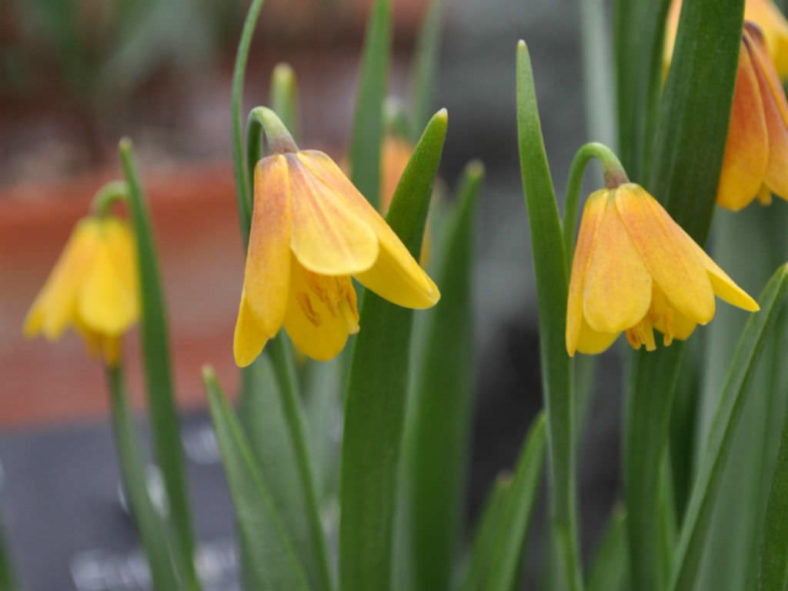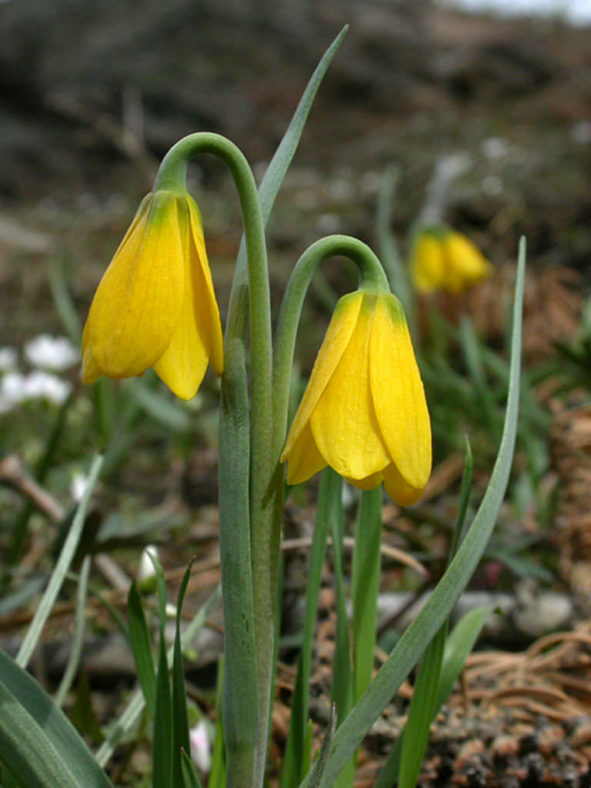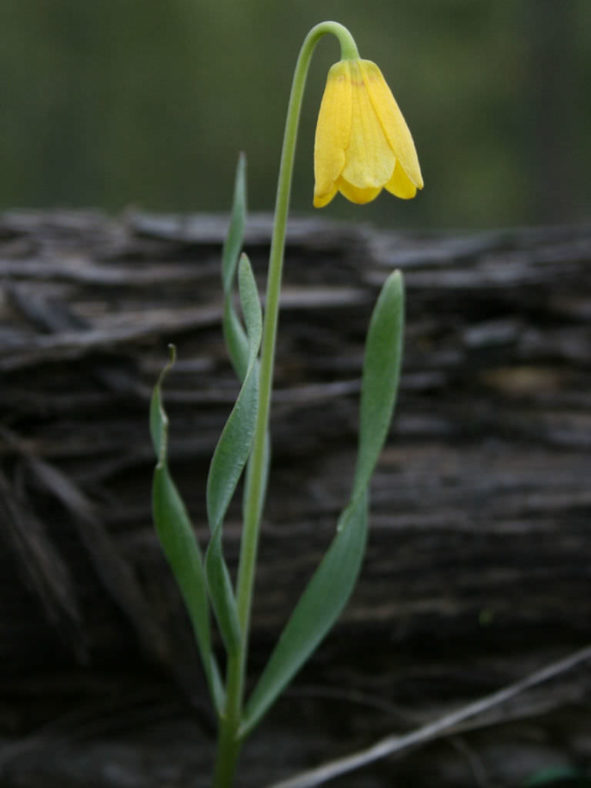Scientific Name
Fritillaria pudica (Pursh) Spreng.
Common Name(s)
Yellow Fritillary, Yellow Bells, Modest Lily, Yellow Missionbells, Golden Bells
Synonym(s)
Lilium pudicum, Amblirion pudicum, Fritillaria dichroa, Fritillaria leucella, Fritillaria oregonensis, Fritillaria oreodoxa, Fritillaria utahensis, Fritillaria washingtonensis, Ochrocodon pudicus, Theresia pudica, Tulipa pudica
Scientific Classification
Family: Liliaceae
Subfamily: Lilioideae
Tribe: Lilieae
Genus: Fritillaria
Origin
Fritillaria pudica is native to the western United States and Canada.
Flower
Color: Yellow
Bloom Time: Early spring
Description
Fritillaria pudica is a small perennial plant that grows up to 1 foot (30 cm) tall. It has yellow bell-shaped flowers hanging at the top of the flower stalk. A pair or a whorl of linear leaves may be subtending the solitary (sometimes 2 to 3 in a group) flower. The flower fades to red or purple.

Hardiness
USDA hardiness zone 3a to 7b: from −40 °F (−40 °C) to 10 °F (−12.2 °C).
How to Grow and Care
Unusual and hardy, Fritillaria bulbs produce best when planted in moist soil in a sunny to part shade location in the flower bed. Wildflower Fritillaria lilies are an excellent choice for gardeners who want out-of-the-ordinary specimens among more common spring-blooming bulbs.
Growing Fritillaria may reach 4 feet (1.2 m) or more in spring. Use wildflower Fritillarias as specimens, in groupings, or as an addition to a traditional bulb bed.
Be prepared to plant bulbs as soon as they arrive. Plant larger bulbs with the base about 5 inches (12.5 cm) below the soil surface, while smaller Fritillaria bulbs should be planted about 3 inches (7.5 cm) down. Plant bulbs in well-drained soil and keep it moist until the root system is established.
Fritillaria bulbs resist deer, squirrels, and bulb-digging rodents and may help protect other bulbs that are favorites of the critters.
See more at How to Grow and Care for Fritillaria Bulbs.
Links
- Back to genus Fritillaria
- Plantpedia: Browse flowering plants by Scientific Name, Common Name, Genus, Family, USDA Hardiness Zone, or Origin
Photo Gallery
Click on a photo to see a larger version.




